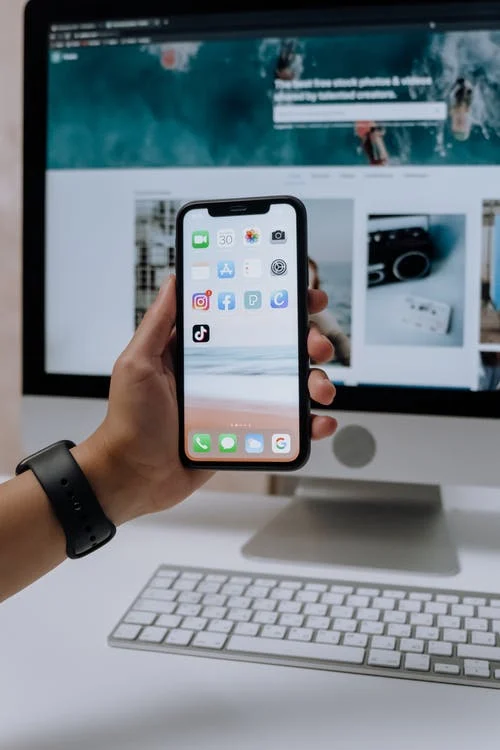Decisions, decisions! You’ve leaped to use Shopify as your eCommerce platform. Good choice!
Now let’s help you decide how to choose the best Shopify theme that fits your vision.
What is a Shopify theme exactly?
A Shopify Theme can be described as the look and feel of your eCommerce store – almost like a template that you use to build your brand and attract your target audience.
You’ll find over 100 free and premium pre-made templates in the Shopify Store. Different templates have different styles and layouts and can be customized to your needs.
Although each theme is different, all articles share the two following features:
Page elements: Body, footer, header, menu navigation.
Page types: Article, blog, cart, collection, collection list, contact, custom, customer, home, password, product, and search.
When choosing the best Shopify theme, you will be looking for a template that supports your branding, messaging, and design goals.
Let’s dive into the essential factors to consider when choosing the best Shopify theme for your store:
-
Budget
Let’s start with the budget. You will need to decide whether you will go with a free or paid theme. There are many perfect free themes and a wide range of produced pieces that cost up to $180.
I found choosing a theme quite confusing as a beginner and ended up starting with free music and then upgrading to a paid theme as the store became profitable.
Your product listings carry over to your new theme when you change themes, so switching themes is not a big deal.
Important note: Switching to a new theme does, however, become an issue if you have already customized your free music. When you switch themes, you will lose any modified HTML/CSS and customized theme pages.
So as a beginner, you don’t need to have money to spend on design to create a fantastic-looking store that is easy for your customers to use. A free theme is a great start!
Just do the calculations regarding developer support cost if you need to customize a free theme. You could pay more than the cost of a paid theme if you want to add features tailored to your specific brand.
-
Features & functionality
When you set up your first Shopify store, you’ll have a default theme already loaded. The Debut theme is designed to get you up and running with little to no customization required.
Debut is a simple, out-of-the-box solution that makes it super easy to set up your administration details, load your products and content, and launch.
Because many people start with the Debut theme, it does make it difficult to stand out from the crowd, so take a little time to shop around, perhaps for a different but equally easy-to-set-up fit for your store.
While customization is relatively straightforward, you’ll want to select a theme closely matching your vision.
You can access the theme store via your Shopify dashboard. Navigate to the themes section and filter by either Free or Paid themes.
You can use the Shopify Theme Store’s search and filtering options to find a suitable theme for your online store by using the search bar at the top right of the page.
Start by asking yourself some questions:
What is my industry?
What kind of products do I wish to sell?
Do I want a slideshow or embeddable video on the homepage?
Is mobile-friendly my top priority?
Do I need a theme with a FAQ page?
Do I want comprehensive navigation?
To refine your search results, use the filters on the sidebar menu:
Aim for your theme to have many of the main features you are looking for so you can cut down on development costs in the future. When looking for the elements of a theme, the main ones are listed right under the theme preview page.
Sometimes the theme offers users a demo or even a free trial. It’s worth it to run the article on your store, upload some of your images and see how it works for you.
-
Customization
As mentioned, beginner Shopify store owners can safely opt into a free theme requiring little to no customization.
Do your developer support and cost homework if you need customization, either for a free or paid theme.
Research the reviews and the developer carefully. You can use Google, the Shopify Community, or the tab next to the theme’s features, as shown below:
The Shopify theme I started with ended up having a bug that often made importing products from a 3rd party platform problematic. It was costly to fix. That was what ultimately pushed me to upgrade.
If you buy your theme from Shopify instead of a developer, you’ll have full Shopify support and peace of mind. It’s still a good idea to read up on other peoples’ experiences with the theme.
Ultimately, as you move from being a beginner, you’ll need to work on your creativity and business savvy to stay competitive. Thankfully, Shopify theme customization allows you to do just that.
-
Conversion optimization & user experience
When choosing the best Shopify theme, we need to look out for many things to ensure that our store converts (turns a visitor into a customer).
We are looking for:
Simple
Secure
Fast
And a great call to action!
Let’s go through them.
To ensure a reasonable Shopify conversion rate, you’ll want to take your potential customer on a simple, secure journey to check out. A good user experience is essential, and things like placing your CTA’s strategically and incorporating social proof are critical.
People buy from stores they trust, and they buy products that other people seem to have had a good experience with. You’ll need to ensure your theme accommodates testimonials and even ‘recently sold notifications’ in an appealing way.
Speed is a critical element for converting. According to Pingdom, a helpful website monitoring tool, an ideal website load time should be no more than 2 seconds. The probability of bounce rate increases by 32% if the page load time increases from 1 to 3 seconds.
Another great way to improve conversions is to create a design that draws the audience’s attention to call-to-actions. By changing the color of buttons or the font, or placing the CTA in a different place, for example, we can significantly impact our conversion rate.
Note: Here’s a tip. There is conflicting advice about the perfect CTA color, but one thing is for sure, and that is that it must pop! Ensure that you have a high contrasting color against your background.
This one pops:
For the best conversion rate, simple is better. Even large brands ensure that users get to the checkout with minimal clicks – preferably 2 and 3 clicks and a purchase is made!
In your menus, aim for the least amount of navigational levels possible. And if you have a vast inventory, look for a theme that will support a megamenu rather than standard drop-downs to avoid overcrowded navigation and user confusion.
Also, think about whether the theme offers you the opportunity to build your brand with video or a striking ‘About Us’ feature. Strengthening trust increases conversions for sure!
-
Responsiveness
When choosing the best Shopify theme, please pay careful attention to whether it is mobile-friendly.
Statista measured the percentage of mobile device website traffic worldwide from 1st quarter 2015 to 1st quarter 2021, and more than half of all internet traffic comes from a mobile device.
Statista: Share of global mobile website traffic 2015-2021
Mobile responsiveness used to be a nice-to-have website feature. Not anymore. You’ll dramatically increase your audience reach with a mobile-friendly theme.
And you’ll have a happier customer. With a faster-than-lighting speed, easy-to-click buttons, images that display well, and a streamlined checkout on mobile, your sales will skyrocket.
Some themes do this better than others. Ensure that a customer can easily add the product to their cart and checkout on mobile. It sounds simple, but it’s easy to miss this functionality when working on a desktop.
And remember, its crawlers look at all websites as mobile devices. This means that when you are looking to choose the best Shopify theme, one that is mobile-responsive will help your eCommerce store rank higher in Google.
-
Niche
There is no ‘one size fits all strategy when choosing a theme because every business is unique. So, take time to figure out the questions that we went through above to narrow down your options.
Let’s say you’re dropshipping kitchen goods. You’d want to optimize your eCommerce site with functions such as quick product view, hovering product information, and optimized large image viewers. A beautiful image Instagram feed wouldn’t be a priority.
Check out the competition. Knowing how your competitors’ stores look might give you inspiration and a better understanding of what is needed.
And don’t fall into the trap of selecting a theme based on the products you see on the mockup. Ensure that the article has the functionality you are looking for.
When you’re browsing themes in the Shopify Theme Store, you can use the drop-down menus at the top of the page to browse themes by collection or industry.
You can sort by collection to see themes with a particular style, layout, or purpose. And you can sort by industry to see articles that have been designed primarily for a specific sector.
This is not always the case, however. For example, the ‘Simple” theme could be listed under ‘Health and Beauty’ but can also showcase most products where a minimalist template is required.
Steps:
Go to the Shopify Theme https://eboxman.com/top-5-shopify-apps-you-should-install-on-your-store/ Store.
At the top of the page, click Collections or Industries, and then select a category.
To refine your search results, use the filters on the sidebar menu.
-
Catalog size
You can also use the filters in the Shopify theme store to review themes according to the number of products they support. This is important.
For example, suppose you have a small collection of handmade products. In that case, you won’t need a theme that displays several categories on the home page or advanced search (navigation) options that you would need if you are selling hundreds of items of clothing.
With an extensive catalog, you’ll need a theme that helps you display your whole collection and makes it accessible for browsers. There are themes like Supply (free, from Shopify) or Avenue ($180, from Shopify) that work well for large catalogs.
By contrast, If you’re selling ten products or less, you might be better off sticking to a more focused theme with more options for developing your homepage.
Designs like Debut (free, default theme from Shopify) provide blocks for product recommendations, promotional banners, and testimonials.
-
A legitimate purchase
It is recommended to choose a theme within the Shopify Theme Store. That way, you’ll know that Shopify has carefully evaluated it for quality and functionality before listing it.
By purchasing your theme from Shopify, you’ll also be assured of getting great support.
Not every theme developer has the same type of support, so I suggest if you are interested in a 3rd party theme, reach out to the theme developer with a question and see how long it takes them to reply.
You can usually find the name of the theme developer on the listing.
And with a powerful search function, you are sure to find something that suits your needs!
It’s time to find a theme with all the features you need to convert and the style and design to attract your target customers.
Just like customers read reviews about your site to make their buying decisions, you should be reading reviews for themes.
Conclusion
That’s it! Are you feeling more confident about how to choose the best Shopify theme?
We hope this list of things to consider has been helpful in your search. This checklist to guide you on your path will be beneficial reading next to ensure that your Shopify store is set up correctly.
When you start your store, it’s not always easy to know which theme will be the perfect fit.
The best thing to remember is that you can always change your theme down the line.
If you’re starting out, a free Shopify theme is the best option, and as your business is growing, you can consider switching to a more customizable design.
Good luck, and let us know if you have theme feedback that can help the rest of us!




